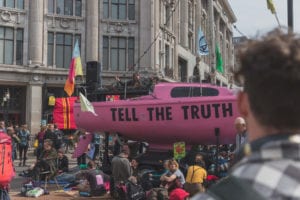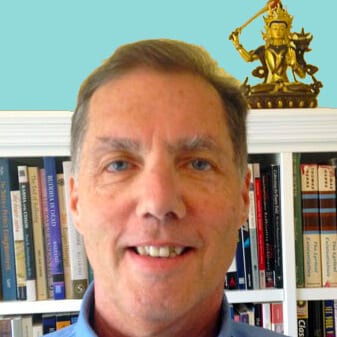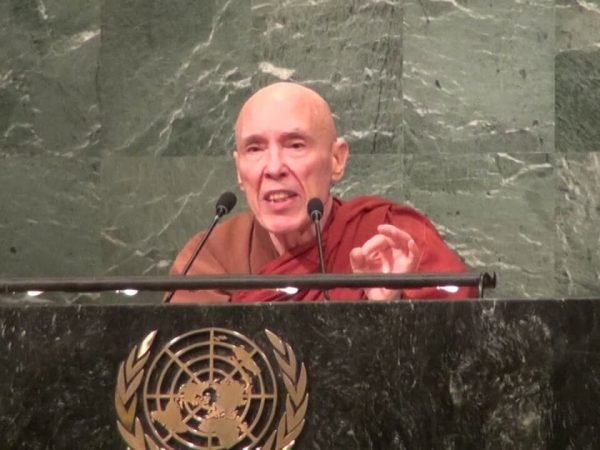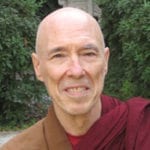Mindfulness provides important psychological and emotional benefits for individuals, but caring for our own personal wellbeing as if it were a private affair is no longer sustainable given the impending risk of the collapse of civilization. Paving a mindful path for collective liberation and ecological healing requires a shift in consciousness from “me to we” to engage with the challenges we face in ways that go beyond a concern for personal salvation.
This shift calls for new forms of spiritual activism that engage the sociopolitical domain with what the Venerable Bhikkhu Bodhi calls “conscientious compassion,” where the practice of compassion is unified with a drive for justice. Thus, we need a “civic mindfulness” that focuses attention on stresses in the body politic as well as the structural interventions and systemic changes that are the root causes of our cultural malaise and ecological collapse. Whereas most therapeutic interventions place the burden on the individual for coping with the anxieties produced by this malaise, civic mindfulness empowers individuals to question the dominant order so that they can see how their everyday worries and insecurities are linked to the social and economic contexts of their lives.
The Three Orders of Suffering
When mindfulness is taught and practiced in ways that help people connect the dots between their personal troubles and public issues, it becomes potentially transformative, but this can’t be done without forging deep bonds of solidarity and communities of resistance as a path for engendering a regenerative culture. However, isn’t this just another call for politics and social activism? Where does mindfulness come in?
To answer this question it’s useful to go back to the principles underlying mindfulness in the spiritual traditions from which it emerged, especially Buddhism.
Suffering that is purely private in its causes and effects no longer exists.
Existential suffering of the human condition—the suffering of sickness, old age and death, anxiety and stress, conflicts in personal relationships, divorce and personal loss—has long been the domain of religious consolation and pastoral care, individual counseling and psychotherapy, and, more recently, of mindfulness-based interventions. This is the first-order of suffering.
Second-order suffering concerns human evil and atrocities where the source of suffering is readily identifiable—whether it be victims of violent crimes or murders, children caged in detention centers, whole populations suffering from wars, genocide or social and environmental injustice, or oppressive working conditions.
The problem is that human distress is no longer limited to or demarcated by these two orders of suffering. Greed, ill will, and delusion—what Buddhists consider the three root causes of suffering—have become institutionalized. This institutionalization makes a third order of suffering difficult to identify because it has become so amorphous, pervasive and systemic. As Bruce Rogers-Vaughan puts it, “Oppressors no longer have faces, even the impersonal “faces” of the state, the corporation, or the church. Third-order suffering does not simply replace first or second-order suffering. Rather, it arises alongside them. The three orders coexist and interpenetrate. They too are entangled.”
Hence, suffering that is purely private in its causes and effects no longer exists. To become truly revolutionary, teachers of mindfulness need new practices that reflect this fact and are capable of tackling the entangled nature of distress. This requires a much wider focus, using communal practices to develop insights into how our social and political experience is embodied.
The “Faux Mindfulness Revolution”
A civic-oriented mindfulness helps individuals to cut through the obscuring fog of third-order suffering in order to recognize that the anxieties, insecurities and rage they feel are political, not merely personal in nature. But we cannot take on such a task in isolation. Civic mindfulness is grounded in community formation by recognizing our shared vulnerabilities and mutual interdependence. In this way, people can come to see how social conditioning has influenced their identities and how they have internalized messages of competition, violence and domination. This form of mindfulness offers an opportunity to reorient practices away from instrumental ends towards a more prophetic critique of underlying problems and solutions.
By contrast, the “faux mindfulness revolution” is led by elites and affluent professionals who have used their cultural capital to gain insider access to a variety of institutions including corporations, public schools, community agencies, government, and even the military. Rather than opposing and confronting institutional authorities, these mindful elites believe that by inoculating individuals with mindfulness, social reform and systemic change will naturally follow.
Many mindfulness trainers (even those who view themselves as quite progressive) are fond of providing anecdotal stories of how individuals in their programs became kinder and more relationally sensitive and aware of their surroundings. That’s fine. Nobody questions these outcomes as a possibility, but such “mindful moments” are unlikely to go further without some other impulse towards deeper and broader action and understanding.
Civic mindfulness is grounded in community formation by recognizing our shared vulnerabilities and mutual interdependence.
Being mindful in the sense of pausing and reflecting before re-tweeting an inflammatory political post, for example, is a commendable act of impulse control, but it is a far cry from joining with others in collective action to address political polarization and create new constituencies for change. Similarly, providing philanthropic or pro-bono mindfulness interventions—whether it be teaching mindfulness in prisons or training community agencies in response to environmental crises—are still dependent on a model of individual suffering and service. As the socially-engaged Buddhist teacher David Loy is fond of saying, “we have become much better at pulling drowning people out of the river, but…we aren’t much better at asking why there are so many people drowning.”
This is why a recent UN report suggests that mental health can be promoted and treated more effectively by focusing on social justice using a rights-based approach. Alleviating inequality is a much better public policy investment than doling out pharmaceuticals, therapy, and mindfulness-based interventions. “The best way to invest in the mental health of individuals is to create a supportive environment in all settings, [including the] family and the workplace,” says Dr. Dainius Pūras, the UN’s Special Rapporteur on Health. As his report concludes:
Conceptualizing the determinants of mental health requires a focus on relationships and social connection, which demands structural interventions in society and outside the health-care sector… [pushing back against the] use of interventions that focus on immediate, individual behavioural factors, rather than adequately addressing the structural conditions, which are the root causes.
In this sense the current hype around quick-fix TED talks and self-help gurus for training individuals who are “mentally fit” and “resilient” is seriously misleading. Here is Dr. Michael Ungar from the Resilience Research Centre at Dalhousie University in Canada writing in the Globe and Mail:
We have been giving people the wrong message. Resilience is not a DIY endeavour. Self-help fails because the stresses that put our lives in jeopardy in the first place remain in the world around us even after we’ve taken the “cures”…The effects are fleeting and often detrimental in the long term. Worse, they promote victim blaming. The notion that your resilience is your problem alone is ideology, not science.
Civic Mindfulness in Action
Allying mindfulness practices with radical action is a way of “making refuge.”
In that case, where should we look for guidance and inspiration—for examples of civic mindfulness in action? One emerging case is Extinction Rebellion (XR), whose leaders have intentionally integrated mindfulness practices into creating cultures of constructive resistance. In their demands to halt biodiversity loss and reduce carbon emissions, XR deploys mindfulness as a “spiritual truth force” in their civil disobedience and direct action protests. In an interview for Transformation, Bill Beckler, a co-coordinator of outreach for XR in New York City, told me that “mindfulness is used as a spiritual support” and “is partly the reason for the success of our protests.”
Beckler emphasizes that in XR’s organizing efforts, “we don’t want to mute suffering.” Instead, mindfulness is used to amplify the distress activists feel by bringing it into collective awareness. Pain, grief, despair and anger are not impediments to mindful resistance, they are its fuel.

Tom Carling, the board president of the New York Insight Meditation Center, has joined forces with the XR movement, attending all four major actions in New York. “We can no longer just focus on personal transformation,” he said when I spoke to him by phone.
Responding to the criticisms that the XR movement in the US is “too white”, Carling told me that the center is now focusing on the intersectionality of the ecological crisis. In the US, a fourth demand has been added to be more inclusive of the most vulnerable people, who have been bearing the brunt of environmental injustice for decades, especially in the Global South. Carling’s aspiration is that the New York Insight Meditation Center can be the spiritual home for XR New York chapter.
As these examples show, allying mindfulness practices with radical action is a way of “making refuge.” This begins by bearing witness to our shared vulnerabilities as a means to rebuild trust and safety, and re-situating mindfulness in a larger socio-ecological context. By doing so, we can develop capacities for collective resistance and socially-engaged action as well as individual liberation. Those who suffer together—the literal meaning of “compassion”—can re-imagine new futures together.
This article was originally published on Transformation, hosted on the openDemocracy platform. It is reprinted here with permission.






